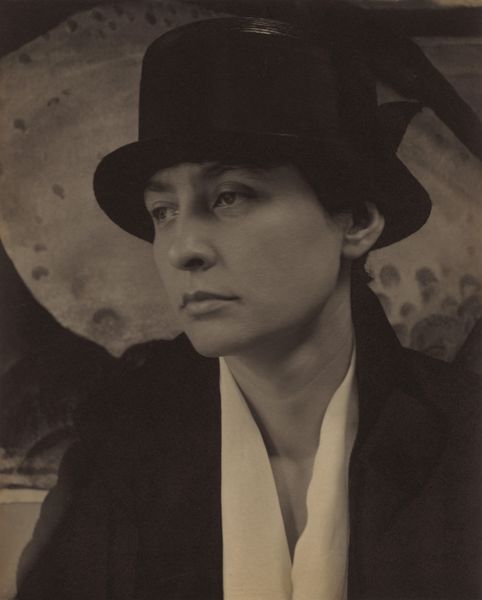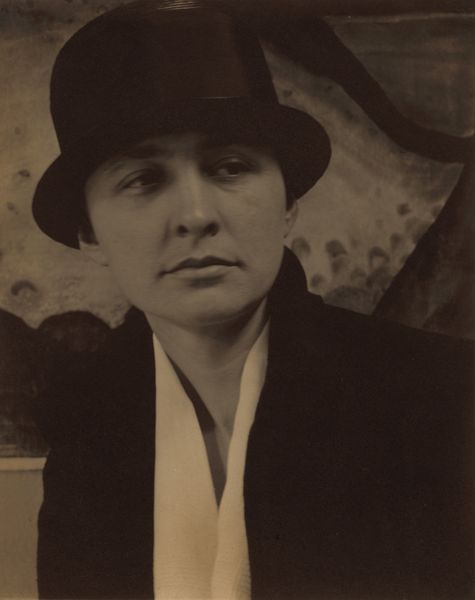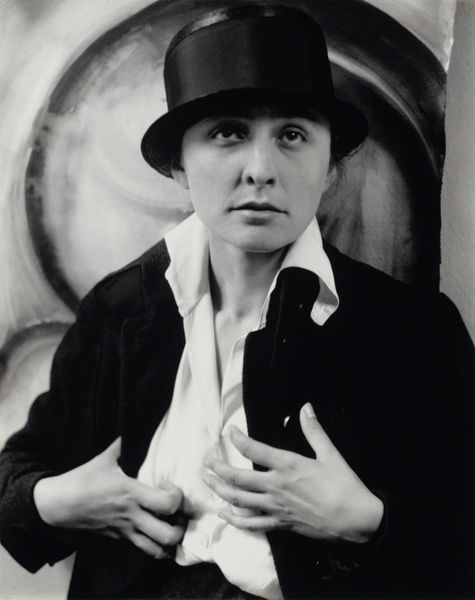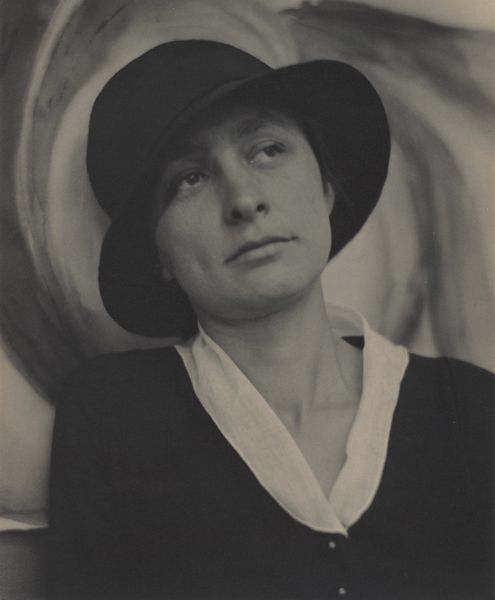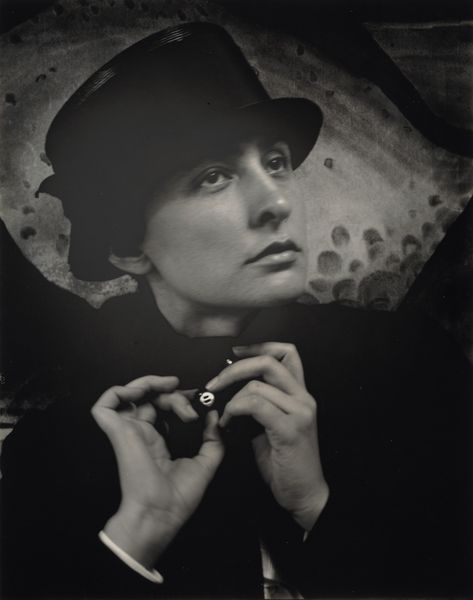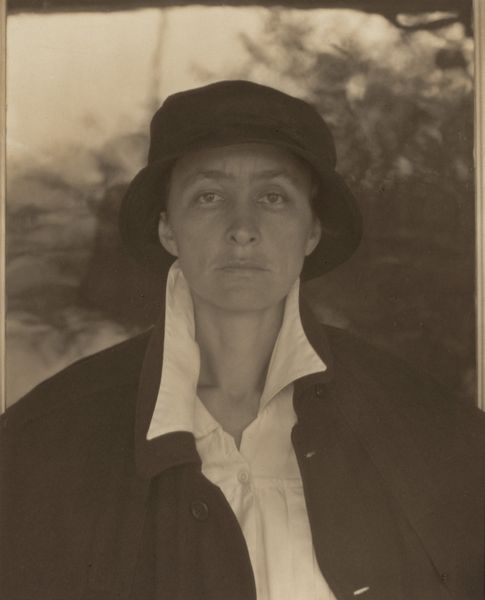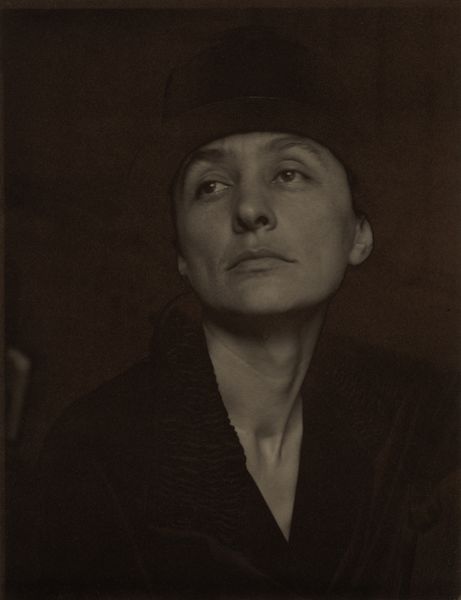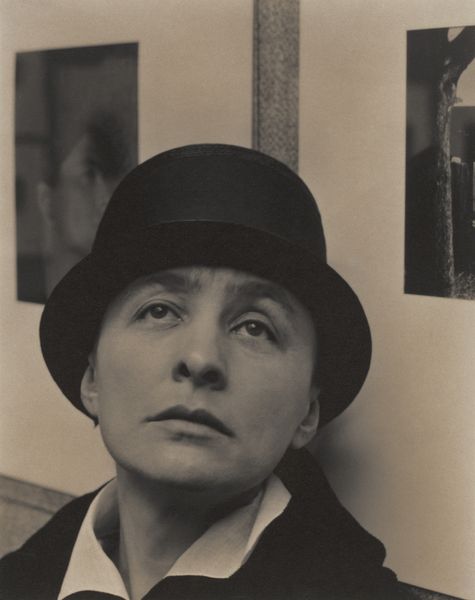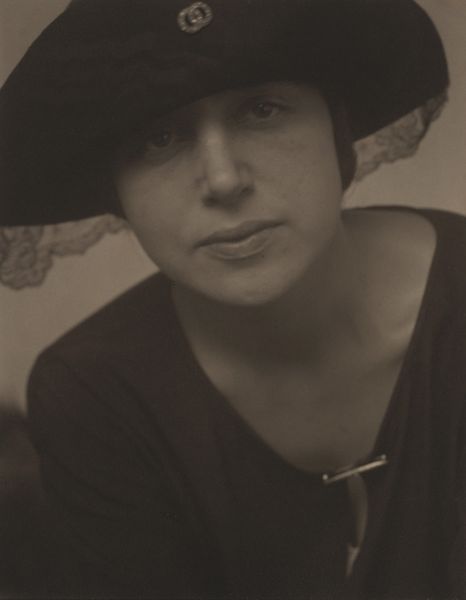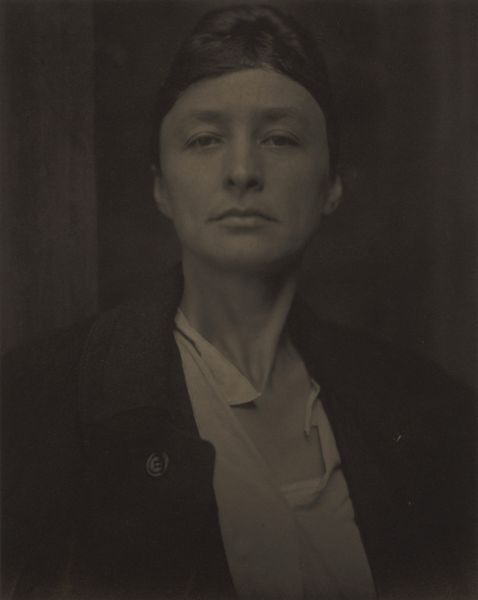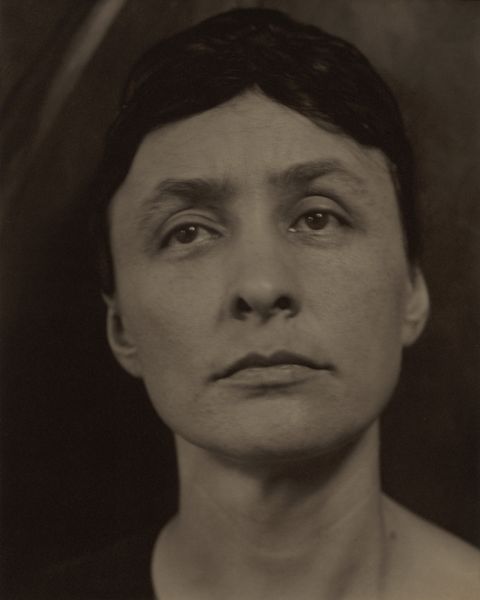
photography
#
portrait
#
self-portrait
#
portrait image
#
pictorialism
#
portrait
#
photography
#
portrait reference
#
portrait head and shoulder
#
portrait drawing
#
facial portrait
#
portrait art
#
modernism
#
fine art portrait
#
celebrity portrait
#
digital portrait
Dimensions: image: 24.1 x 18.8 cm (9 1/2 x 7 3/8 in.) sheet: 25 x 20.4 cm (9 13/16 x 8 1/16 in.) mat: 56.5 x 46.4 cm (22 1/4 x 18 1/4 in.)
Copyright: National Gallery of Art: CC0 1.0
Editor: So, this is a portrait of Georgia O'Keeffe, taken by Alfred Stieglitz in 1918. It’s a photograph, and it strikes me as very… composed, almost staged. What's your take on this piece? Curator: It's crucial to remember that Stieglitz and O'Keeffe's relationship was deeply intertwined with the New York art scene and its shifting cultural landscape. The image speaks to pictorialism, but also challenges the very notion of portraiture as a purely objective representation. This photograph isn't simply *of* O’Keeffe; it’s a carefully constructed *presentation*. What kind of statements do you think that they tried to say? Editor: It's interesting you mention "presentation." The hat, the unbuttoned shirt...it all feels deliberate, playing with gender roles, perhaps? I wonder if they sought to elevate the status of women within avant-garde circles? Curator: Exactly! Stieglitz used his platform at 291 gallery to champion modernist art, and O'Keeffe's work and persona were integral to that project. Her clothing choices, even the controlled intensity in her gaze, served as potent symbols of artistic independence. Do you agree that this portrait contributed to constructing O'Keeffe's public image? Editor: Absolutely, this portrait really highlights that Stieglitz controlled narrative. Considering he photographed O’Keeffe hundreds of times, this photograph isn't just a personal snapshot. It's part of the broader, evolving representation of the artist. I almost feel this created art world dynamics rather than documenting her personality. Curator: Precisely. The politics of imagery are central here. The photograph acted as a deliberate act of curation within Stieglitz's artistic and commercial enterprise. It reflects both his vision of her and, perhaps, O'Keeffe's self-fashioning within those constraints. Now what is your impression of O'Keeffe's look in comparison with other portraits? Editor: I realize the cultural context behind what is staged in front of us shapes how we interpret any photograph from any historical period. That makes it more dynamic and layered. Curator: Yes, and the reciprocal effects within their personal dynamic and within society. A simple photograph shows complicated dynamics between gender and art.
Comments
No comments
Be the first to comment and join the conversation on the ultimate creative platform.
